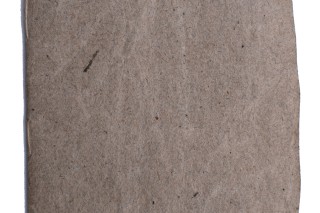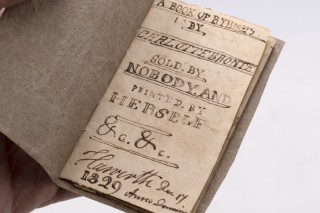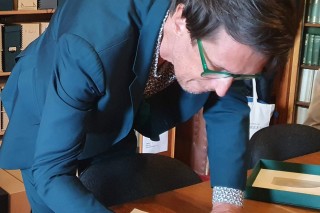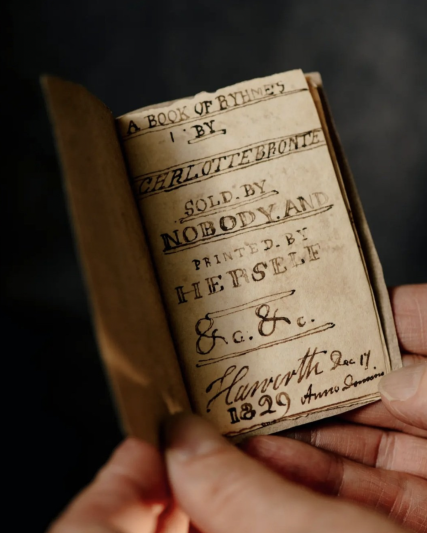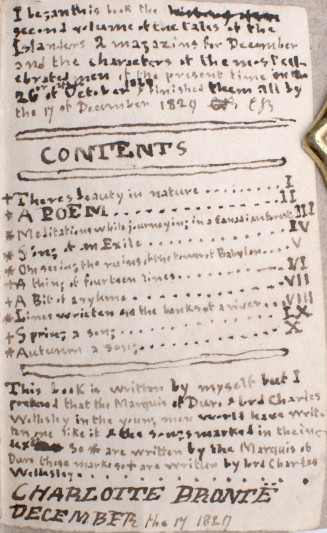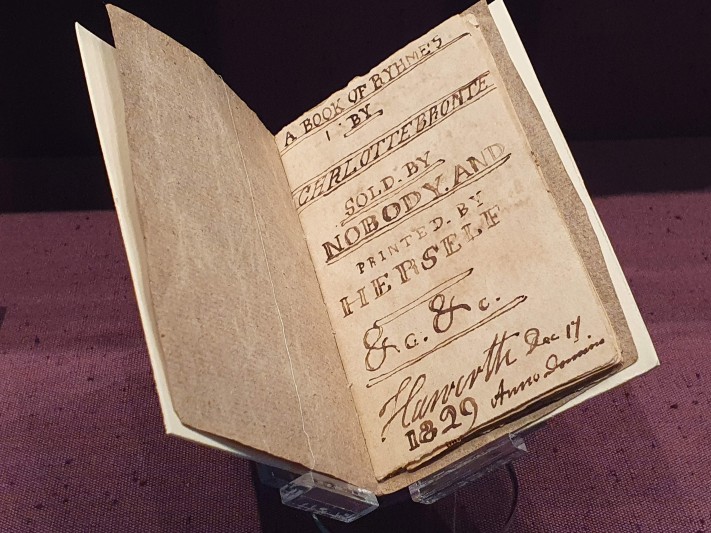Ann Dinsdale, Principal Curator, writes: The year of 2022 turned out to be a significant one in the history of the Brontë Parsonage Museum. Following the excitement of the Friends of the National Libraries’ acquisition of the Blavatnik Honresfield Library, and the donation of important manuscripts and printed books to the Museum, Parsonage staff were alerted to the sale of another important Brontë item about to take place in New York.
This was ‘A Book of Ryhme’s by Charlotte Brontë, sold by nobody and printed by herself’, dated 17 December 1829. This miniature manuscript contains ten unpublished poems, all penned by 13-year-old Charlotte in minuscule writing and then hand-stitched into brown paper covers to form a book. The Brontë Parsonage Museum is the major world repository of Brontë manuscripts and holds a collection of the famous little books produced by Charlotte and her brother Branwell. Their minute scale and miniature details such as title pages and advertisements, make these little manuscripts particularly memorable and iconic items. Together, they chart the evolving saga of the Brontës’ imaginary worlds and Charlotte Brontë’s development as a writer.
In an introduction to the poems, Charlotte writes that the following are ‘Attempts at rhyming of an inferior nature it must be acknowledged but they are nevertheless my best’. Despite her disparaging remarks, Charlotte included the tiny volume in her Catalogue of my Books, compiled in 1830, and we know that she originally considered her true vocation lay in poetry. In 1836, at the age of 20, Charlotte wrote to the Poet Laureate, Robert Southey, seeking an opinion of her poems. Her letter has not survived but Southey’s response makes it clear that she had told him of her desire ‘to be for ever known’ as a poet. Although Southey took the trouble to respond to Charlotte’s letter, his advice was not encouraging; ‘Literature cannot be the business of a woman’s life: & it ought not to be.’ Charlotte kept Southey’s letter for the rest of her life but fortunately she did not heed his advice. Her first venture into publishing was a collaboration with her sisters, Poems by Currer, Ellis and Acton Bell, which sold only two copies. It was at this point that the sisters turned to novel writing. In 1847, Charlotte’s Jane Eyre was published to instant acclaim, once again under her ‘Bell’ pseudonym.
After the deaths of all the Brontës, the ‘Book of Ryhmes’’ travelled from Haworth to Banagher, in Ireland, with Charlotte’s widower, Arthur Bell Nicholls. Many of the other Brontë manuscripts he had retained were eventually handed over to the bibliographer and book collector, Thomas James Wise, but possibly this little book held a special appeal for Nicholls. He never parted with it and it was only after his death that it was included in the second sale of the Nicholls collection, held at Sotheby’s in 1914. Two years later it turned up in a sale at the Walpole Galleries in New York then disappeared from view until the announcement earlier this year that it was to be sold by James Cummins Rare Books in New York. The Friends of the National Libraries mounted an extraordinarily impressive fundraising campaign and in just a few weeks had raised $1.25 million to purchase the little book, which they have donated to the Brontë Parsonage Museum.
On 29 July 2022, a special reception to celebrate the little book’s arrival from New York was held in the book-lined offices of Maggs Bros. in Bloomsbury. Displayed in a central glass case, the little book was an object of wonderment. Henry Wessells of James Cummins Rare Books was present along with many of the donors and representatives of FNL, who listened as Isabel Adomakoh Young read a selection of poems from the tiny volume. Three days later, on Yorkshire Day, the manuscript arrived in Haworth and will be on display at the Parsonage from July 2023 until the end of the year.
